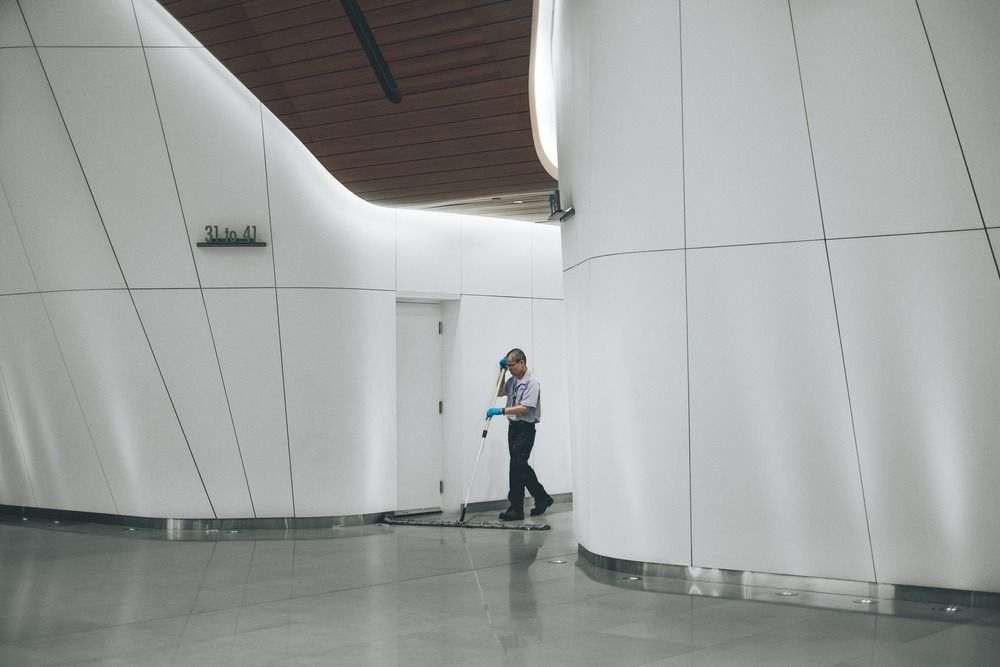In our ever-changing world, consumers expect a lot more from their customer...
Read more
 Published on 4th June 2023 by Gemma Harding
Published on 4th June 2023 by Gemma Harding
As up to 8 million people in the UK are employed as lone workers, it’s likely that you know or employ a good number of them.
What may be less clear is how you can define a lone worker, and what responsibilities you might have for protecting them.
In this guide, we’ll look at what defines a lone worker and the steps an employer should take when hiring these employees. There are two reasons why this is important. Firstly, to ensure the safety and wellbeing of the staff member, and also to ensure that the employer is covered against any legal action.
Let’s start with a simple definition of what a lone worker actually is.
The Health and Safety Executive (HSE) defines lone workers as those who work by themselves without any direct supervision.
However, you’d be mistaken in thinking that lone workers are only those who work in isolation. The majority of lone workers are not physically alone all the time. Many of them work with the general public or in a larger team, but the nature of their job means they have to work without direct supervision from time to time.
Still, these workers need to be protected. Crucially, the onus is on the employer to ensure their safety at all times.

There are a wide variety of occupations that involve lone working, even within big organisations. We’ve put together a list of examples that you can refer to:
| Type of lone worker | Examples |
| Out-of-hours staff | Cleaners, security, maintenance and repair staff, virtual receptionists |
| Fixed establishments where there is only one member of staff | Petrol stations, kiosks, home workers |
| People working separately from others in the same fixed establishment | Factories, warehouses |
| Service workers | Postal staff, social workers, probation officers |
| Workers whose occupation involves a lot of lone travel | Lorry drivers, taxi drivers, sales representatives |
Before you can put any measures or policies in place for lone workers, it could be helpful to do a little homework first. As an employer responsible for the health and safety of your staff, you need to educate yourself on all the relevant legislation.
For lone workers, there are two key pieces of legislation you need to know about. These are:
Both of these pieces of legislation set out the legal requirements for safe lone working.
It could also be useful to know about BS 8484:201, which is the British Standards Institution (BSI) industry standard for providers of lone working safety services. It isn’t a legal requirement for employers, but this accreditation can show that you’ve met high standards with regards to protecting lone workers.
Yes, it is legal to have lone workers. However, this is only as long as employers take the right safety precautions first.
So, what do businesses need to do when they have lone workers? There are two main steps to follow. The first is to carry out a detailed risk assessment to flag up any potential hazards, while the second is to put policies and measures in place to mitigate or prevent these risks.
The Management of Health and Safety at Work Regulations (1999) require employers to undertake risk assessments. As part of this, employers must carefully consider any health and safety risks a lone worker might face in any environment and take action to combat them. They should then implement a lone worker policy, which should be communicated regularly to all staff. We’ll look at both of these steps in more detail next.
It’s also important to remember that employers aren’t just responsible for the health and safety of their own workers. They’re also responsible for the safety of contractors and self-employed staff that they hire.
While some hazards can be seen, others are not so obvious. Here are some risks a lone worker could be exposed to at any time:
When you’re reading up on your responsibilities as an employer with regards to your staff, you’re likely to come across the term ‘lone worker protection’. This simply refers to the set of measures and policies your organisation puts in place specifically to keep lone workers safe while they’re on the job.
Lone worker protection can cover a wide range of things, from the initial risk assessment right through to refresher health and safety training.
You can even outsource some elements of lone worker protection, as part of ongoing incident management measures. For example, you can use our proactive or reactive telephone service here at CallCare to ensure regular check-ins with staff who work in isolation.
The most important thing you can do as an employer to protect your lone workers is to identify and manage risks. Crucially, you must do this before someone starts working unsupervised – or you could be putting them in danger.
Protecting lone workers means taking into account all kinds of risks, whether it’s an accident or injury, or stress, anxiety or mental health issues.
Here are some key steps that an employer should take to stay compliant with existing health and safety legislation:
Assess the environment and the role to determine the correct level of supervision. If your workers will be operating in confined spaces, near live electricity conductors or with clients who could become violent, they probably need at least one other person present.
Ensure that lone workers have all the equipment they need to carry out their job safely. For example, maintenance workers may need voltage-insulated gloves and shoes in case they need to carry out electrical work.
Educate employees about the risks of lone working, their rights when working alone, and measures they can take to keep themselves safe.
Find a personal protection service that allows you to get real-time updates on your employee’s status.
To carry out an effective risk assessment, you can follow this checklist provided by the HSE:
With the proper training, you can ensure lone workers keep themselves as safe as possible while working by avoiding the risks you’ve identified with them.
What’s most important is that they know where to draw the line between a safe activity and a risky one. Employers should set the limits for employees before they go to work and keep in touch with their staff at regular intervals to ensure those limits are being adhered to.
No matter how many precautions you and your workers take, accidents can still happen. That’s why it’s crucial that you have a remote lone worker solution that allows you to respond rapidly should anything happen.
At CallCare, we solve this problem with our lone worker protection helplines. We have a dedicated team who keep in touch with your remote employees at regular intervals to ensure they’re safe.
If there are any problems, our team can respond immediately with the appropriate action, whether that’s contacting a supervisor or calling the emergency services.